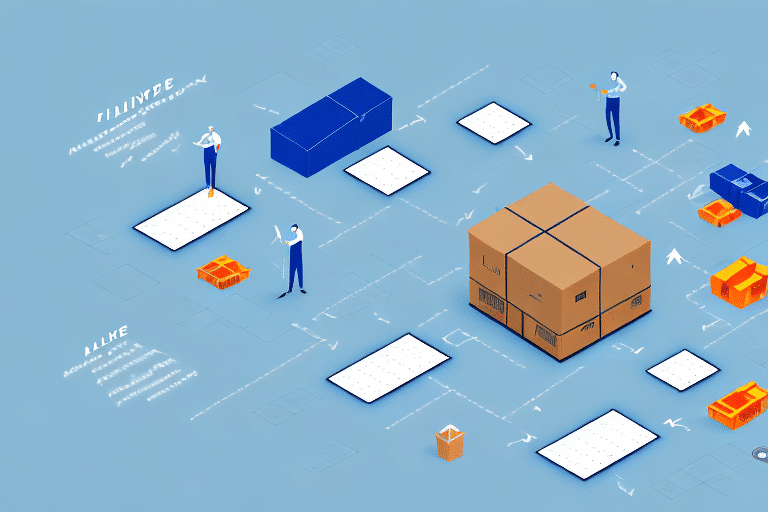How to Connect, Optimize, and Manage LSO for 3PL Fulfillment Providers
Logistics Service Optimization (LSO) has become a cornerstone for 3PL fulfillment providers aiming to enhance efficiency and effectiveness in order fulfillment. Leveraging advanced technology and data analytics, LSO streamlines logistics processes, ensuring that client orders are managed with precision and speed. This article delves into the essentials of LSO, its benefits, and provides actionable steps for 3PL providers to connect, optimize, and manage their LSO systems effectively.
Understanding the Basics of LSO and Its Importance in 3PL Fulfillment
LSO is integral to contemporary 3PL fulfillment operations. At its core, LSO involves utilizing data and technology to develop smarter logistics operations. By analyzing data from multiple sources, 3PL providers can create accurate forecasting models, efficient routing algorithms, and optimized inventory management strategies.
Implementing LSO enables 3PLs to offer unparalleled efficiency and accuracy, leading to faster turnaround times, reduced costs, and enhanced customer satisfaction. According to a McKinsey report, companies that adopt advanced analytics in their supply chains can improve forecast accuracy by up to 50%.
Additionally, LSO helps 3PLs identify and mitigate potential supply chain bottlenecks. Real-time data monitoring allows for the swift detection of issues, enabling corrective actions before they escalate, thereby minimizing the risk of delayed or damaged shipments.
Key Benefits of Implementing LSO in Your 3PL Fulfillment Business
The implementation of LSO in a 3PL business offers numerous advantages, including:
- Improved Forecast Accuracy: Enhanced predictive models lead to better demand forecasting.
- Increased Delivery Speed: Optimized routing and logistics reduce delivery times.
- Better Inventory Management: Efficient inventory control minimizes stockouts and overstocking.
- Reduced Transportation Costs: Streamlined operations lead to significant cost savings.
- Enhanced Customer Satisfaction: Reliable and timely deliveries boost customer trust and loyalty.
Utilizing LSO techniques, 3PL providers can refine their logistics operations, resulting in heightened efficiency and profitability.
Steps to Connect Your 3PL Fulfillment Provider with LSO
Implementing LSO begins with selecting a technology partner specialized in logistics optimization. Given that most LSO systems rely heavily on data, it's crucial to choose a partner capable of seamless integration with your existing systems. The following steps outline the process:
- Conduct a Comprehensive Audit: Assess your current operations, including inventory management, transportation costs, and order processing speeds.
- Data Integration: Provide your technology partner with access to all relevant data sources, such as inventory and transportation management systems.
- Develop a Custom LSO Solution: Collaborate with your partner to design and implement an LSO system tailored to your business needs.
Post-implementation, continuous monitoring and regular updates are essential to ensure the LSO system adapts to evolving business requirements. Partner support should include ongoing maintenance and periodic reviews to incorporate the latest technologies and best practices.
How to Optimize Your LSO Implementation for Maximum Efficiency
Optimization of your LSO system is an ongoing process that ensures maximum efficiency. Key strategies include:
- Continuous Data Analysis: Regularly evaluate data to refine LSO algorithms and improve decision-making.
- Cost Monitoring: Keep track of transportation expenses and seek ways to reduce them.
- Real-Time Inventory Adjustments: Utilize live data to manage inventory levels, preventing both stockouts and overstocking.
- System Integration: Ensure your LSO system is integrated with other organizational systems like ERP and Warehouse Management Systems (WMS) for streamlined operations.
- Team Involvement: Engage your team in the optimization process to gather valuable insights and foster commitment to the system’s success.
By systematically applying these optimization techniques, your LSO system will remain efficient and cost-effective, driving sustained improvements in your logistics operations.
Best Practices for Managing and Maintaining Your LSO System
Effective management and maintenance are crucial for the longevity and performance of your LSO system. Adopt the following best practices:
- Regular Monitoring: Continuously oversee data inputs and system performance, making necessary adjustments promptly.
- Ongoing Training: Provide continual education to your team to keep them informed about the latest logistics optimization technologies and methodologies.
- Quality Control: Implement strict quality control measures to ensure data accuracy and system reliability.
- Periodic Audits: Conduct regular audits to verify that the LSO system meets current business needs and operates effectively.
- Enhanced Security Measures: Regularly update security protocols, including strong password policies and data access restrictions, to protect sensitive information.
Maintaining these practices ensures that your LSO system remains a robust and valuable asset to your business, capable of adapting to changing demands and technologies.
Common Challenges Faced by 3PL Providers When Implementing LSO and How to Overcome Them
While implementing an LSO system offers substantial benefits, it also presents several challenges, such as:
- Stakeholder Buy-In: Securing commitment from all relevant parties can be difficult. Overcome this by clearly communicating the benefits of LSO and how it aligns with business goals.
- Data Accuracy: Ensuring the reliability of data sources is critical. Implement rigorous data validation processes to maintain data integrity.
- Process Adjustment: Adapting internal processes to accommodate new technologies requires careful planning. Provide comprehensive training and support to ease the transition.
- Cost Considerations: The initial investment for LSO systems can be significant. Assess the long-term ROI and explore financing or leasing options to manage costs effectively.
Addressing these challenges proactively ensures a smoother implementation process and maximizes the benefits derived from your LSO system.
Exploring the Different Types of LSO Systems Available for 3PL Fulfillment Providers
There are various LSO systems tailored to different aspects of logistics, each with its unique advantages:
- Transportation Management Systems (TMS): Optimize routing, carrier selection, and transportation costs.
- Warehouse Management Systems (WMS): Enhance inventory control, storage solutions, and order picking processes.
- Demand Planning Systems: Improve demand forecasting and inventory planning based on predictive analytics.
- Order Management Systems (OMS): Streamline order processing, tracking, and fulfillment operations.
When selecting an LSO system, consider your business's specific needs, scalability, and the level of automation required. An integrated approach, where the LSO system seamlessly connects with existing infrastructure, ensures comprehensive optimization across all logistics functions.
How LSO Can Help Improve Customer Satisfaction and Boost Your Business Revenue
Implementing an LSO system significantly enhances customer satisfaction by ensuring accurate and timely order fulfillment. Reliable logistics operations lead to higher customer retention rates and positive brand reputation. According to a Forbes article, companies that prioritize logistics optimization see a 15% increase in customer satisfaction scores.
Furthermore, LSO contributes to increased revenue through cost savings and operational efficiencies. By reducing transportation and inventory costs, businesses can achieve higher profit margins. Enhanced supply chain visibility and optimized processes also enable businesses to respond swiftly to market changes, capturing new opportunities and driving growth.
Real-Life Examples of Successful LSO Implementation in the 3PL Industry
Numerous organizations have successfully implemented LSO systems, yielding significant benefits:
- Global 3PL Provider: Implemented a TMS leveraging big data and machine learning to optimize carrier selection and routing, resulting in a 20% reduction in transportation costs and a 40% decrease in order processing time.
- Consumer Goods Company: Adopted a demand planning system that increased revenue by 15% and reduced inventory carrying costs by 10% through precise demand forecasting and inventory management.
- Major Logistics Firm: Utilized blockchain technology to enhance supply chain transparency and traceability, reducing the risk of lost or stolen goods and cutting administrative costs by 25%.
- E-commerce Leader: Deployed a predictive analytics system for inventory management, resulting in a 25% reduction in stockouts and a 15% increase in sales revenue.
These examples underscore the transformative impact of LSO on operational efficiency, cost management, and revenue growth within the 3PL industry.
How to Measure the Success of Your LSO Implementation in 3PL Fulfillment
Evaluating the success of your LSO implementation involves tracking key performance indicators (KPIs) to assess its effectiveness. Essential KPIs include:
- Transportation Costs: Monitor reductions in shipping and logistics expenses.
- Order Processing Time: Track the speed from order placement to fulfillment.
- Inventory Carrying Costs: Assess costs associated with holding and managing inventory.
- Customer Satisfaction Rates: Measure customer feedback and retention rates.
- On-Time Delivery Rates: Evaluate the percentage of orders delivered within the promised timeframe.
Regularly reviewing these metrics allows for continuous improvement of the LSO system, ensuring it remains aligned with business objectives and delivers maximum value.
Conclusion
Implementing an LSO system within your 3PL fulfillment operations can lead to significant improvements in efficiency, accuracy, and profitability. By following the outlined steps and best practices, and by continuously monitoring and optimizing your LSO system, you can maintain a competitive edge in the logistics industry. Embracing LSO not only enhances operational performance but also drives customer satisfaction and business growth, making it a vital investment for modern 3PL providers.








